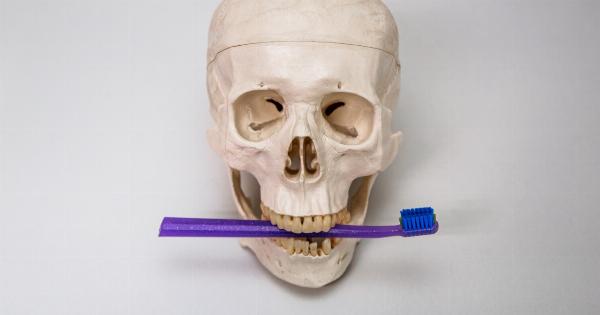As women age, they experience several hormonal changes that can affect their overall health. One such change is amenopause, also known as menopause.
This natural process marks the end of a woman’s reproductive years and is characterized by the cessation of menstruation. Along with amenopause, women also become more susceptible to osteoporosis, a condition that causes the bones to become weak and brittle.
In this article, we will explore the relationship between amenopause and osteoporosis, focusing on bone density and fracture risk.
What is Amenopause?
Amenopause is a normal part of a woman’s aging process. It typically occurs between the ages of 45 and 55, although the timing can vary for each individual.
During amenopause, the ovaries gradually stop producing eggs and the production of estrogen and progesterone, the two main female hormones, decreases significantly. As a result, women experience various symptoms such as hot flashes, night sweats, mood swings, and vaginal dryness.
Osteoporosis and Bone Density
Osteoporosis is a condition that weakens the bones, making them more susceptible to fractures. It is often referred to as the “silent disease” because it progresses without any noticeable symptoms until a fracture occurs.
Bone density plays a crucial role in determining the risk of osteoporosis. Bone density refers to the amount of mineral content in the bones, which contributes to their strength and durability. During amenopause, the decline in estrogen levels accelerates the rate of bone loss in women, resulting in lower bone density.
Fracture Risk in Women
As bone density decreases, the risk of fractures significantly increases. Women in amenopause are particularly vulnerable to fractures, especially in the wrist, hip, and spine.
These fractures can have severe consequences, including chronic pain, limited mobility, and decreased quality of life. It is essential for women to understand the factors that contribute to fracture risk and take appropriate measures to prevent and manage osteoporosis.
Factors Affecting Bone Density and Fracture Risk
Several factors contribute to the development of osteoporosis and fracture risk in women going through amenopause. These factors include:.
1. Age: As women age, bone density naturally decreases. The risk of osteoporosis and fractures increases significantly after amenopause.
2. Hormonal Changes: The decline in estrogen levels during amenopause accelerates bone loss, leading to decreased bone density. Low estrogen levels also affect the production of other hormones that play a role in bone health.
3. Lifestyle Choices: Certain lifestyle choices, such as smoking, excessive alcohol consumption, and a sedentary lifestyle, can contribute to lower bone density and an increased risk of fractures.
4. Family History: A family history of osteoporosis or fractures can increase an individual’s risk of developing the condition.
5. Medical Conditions: Certain medical conditions, including thyroid disorders, rheumatoid arthritis, and gastrointestinal disorders, can increase the risk of osteoporosis.
Prevention and Management of Osteoporosis
While amenopause and the associated decline in estrogen levels are inevitable, there are steps women can take to reduce their risk of developing osteoporosis and experiencing fractures:.
1. Healthy Diet: A balanced diet rich in calcium and vitamin D is essential for maintaining strong bones. Good sources of calcium include dairy products, leafy green vegetables, and fortified foods.
Vitamin D can be obtained from exposure to sunlight and certain foods like fatty fish and fortified dairy products.
2. Regular Exercise: Engaging in weight-bearing exercises such as walking, jogging, dancing, or strength training can help increase bone density and improve overall bone health.
It is important to consult with a healthcare professional before starting any new exercise regimen.
3. Avoid Smoking and Excessive Alcohol Consumption: Smoking and excessive alcohol consumption can contribute to lower bone density. Quitting smoking and limiting alcohol intake can help preserve bone health.
4. Hormone Therapy: For some women, hormone replacement therapy (HRT) may be recommended to help manage the symptoms of amenopause and mitigate bone loss.
However, HRT has potential risks and side effects, so it should be discussed thoroughly with a healthcare professional.
5. Regular Bone Density Testing: Women in amenopause should regularly undergo bone density testing to assess their risk of osteoporosis and fractures.
These tests, such as a dual-energy X-ray absorptiometry (DXA) scan, measure bone density and help determine the need for preventive measures or treatment.
Conclusion
Amenopause, the natural process marking the end of a woman’s reproductive years, can lead to a decline in bone density and an increased risk of developing osteoporosis.
Understanding the relationship between amenopause and osteoporosis is crucial for women to take preventive measures and manage their bone health effectively. By adopting a healthy lifestyle, getting regular exercise, and considering appropriate medical interventions, women can reduce their risk of fractures and maintain strong, healthy bones throughout their lives.





























